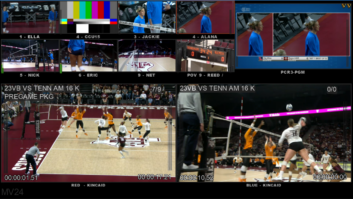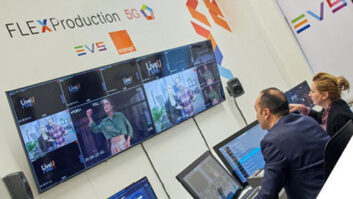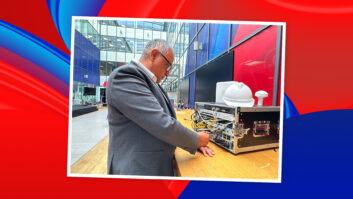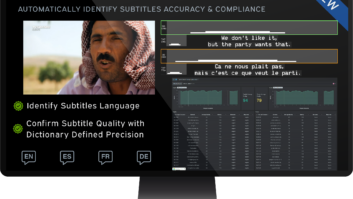TAG Video Systems has announced that its MCM-9000 monitoring and multiviewer platform is being used in the 5G-VIRTUOSA project. The project is funded by the European Union’s (EU) Horizon 2020 initiative and led by a consortium of international industry leaders and aims to explore the potential of distributed IP production and how 5G and virtualisation can provide further capability and flexibility in live production environments.
TAG says that its MCM-9000 was brought in initially to monitor streams in an on-premises system and was subsequently augmented with a cloud-based multi-location configuration in a later phase of the project. The systems were provided by TAG’s sales and service partner in Germany SHM Broadcast GmbH, which also provided some initial training and support to the project team.
The three-phase project is being led by Nevion (a Sony Group company), Mellanox Technologies (part of Nvidia), and LOGIC media solutions. The ‘consortium’ are pooling their specialist expertise to build, test, implement and validate a network “incorporating the latest scalable software defined architectures for collaborative live media production in real operational environments”.
In phase one of 5G-VIRTUOSA the participants set up an end-to-end IP-based system in a single LAN-only setting built on industry standards (SMPTE 2110 and NMOS). The system integrated best-of-breed solutions from multiple vendors, including an on-premises TAG MCM-9000 monitoring and multiviewer platform.
Phase two transferred the system to a three-site WAN-environment to evaluate latency and feasibility in remote, multi-location production scenarios with German broadcaster ARD’s Sternpunkt serving as the central hub for connectivity in Frankfurt, and facilities from other German broadcasters WDR and SWR being the two other locations. Each site has its own resources that are controllable by the others requiring a multiviewer capable of operating in the cloud and monitoring JPEG XS signals in a production environment.
“The goal was to evaluate whether and how the new technical standards such as SMPTE 2110, NMOS and orchestration would be suitable for conventional as well as future production requirements,” explained Haci Cengiz, manager, strategic and business development for LOGIC. “We had different sets of requirements for different aspects of the project such as dealing with compression in OTT formats, on-premises situations, or in the cloud for an interconnected system, and TAG’s multiviewer provided the functionality that we needed for the 5G-VIRTUOSA project.”
The third and final phase of the project plans to further explore remote production processes over 5G connectivity. The addition of 5G will allow media production facilities, equipment, resources, and talent to be shared across locations with real-time transport and processing of live media over IP with up to 100 Gbps. The outcome of 5G-VIRTUOSA is expected to be a significant reduction in live media production costs and a sizeable increase in live content production.
“5G-VIRTUOSA is the coming together of individual companies to develop an end-to-end workflow that allows broadcasters to meet the growing demand for live content efficiently and cost-effectively across diverse locations,” said Kevin Joyce, Zer0 friction officer at TAG. “We are honoured to be the multiviewer and monitoring platform selected to keep tabs on the signals of this incredible confluence of current and futuristic technologies. This project provides the ideal situation to highlight TAG’s far-reaching capabilities that support all the moving parts and ensure that they play well together in the same system.”
The 5G-VIRTUOSA project has received funding from the European Union’s Horizon 2020 research and innovation programme under grant agreement No 866656.







